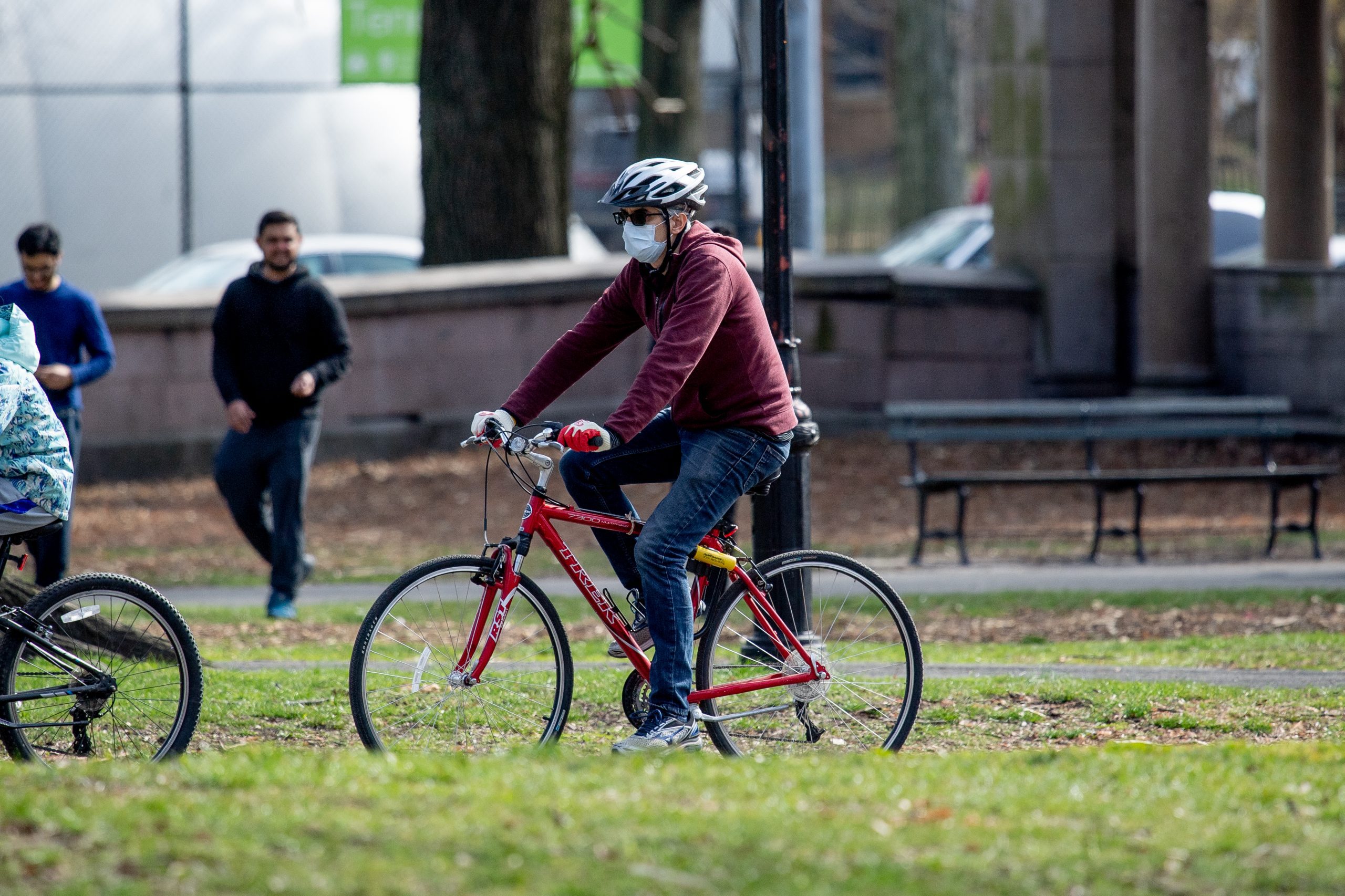Cities Don’t Have to Be Accelerants for Pandemics

The pandemic has come, and the great American cities are going quiet. Workers are emptying out to go to the suburbs, while other urbanites hunker down at home, passing the time in front of numerous flickering screens. Outside, drones overhead provide mesmerizing video footage of dense neighborhoods with very few humans out on the sidewalks and wide-open streets with only the occasional vehicle motoring along, even in the busiest parts of town. Now it appears that density is the enemy. Pandemics “are anti-urban,” writes New York Times architecture critic Michael Kimmelman.
To be sure, many leading urbanists like Kimmelman are suddenly finding it difficult to be cheerleaders for the new urban renaissance—with cities growing denser and more lively—that has rightly been celebrated for these past two decades. Will that all come to a screeching halt, portending a reversal of this trend? Even Chicago Tribune architecture critic Blair Kamin admits that for now, the pandemic is beating cities: “In the conflict between density and social distancing, social distancing should always win…. The joys of density will return once this tragic chapter is over.”
With the virus on the move, some feel less panicked living in suburban or exurban environs, seemingly safe as we drive around our hermetic car-bubbles and await anonymous Amazon deliveries. Who needs face-to-face interaction and pedestrian encounters when people are the enemy? In these times of known unknowns, such as exactly how bad it will get, there is an easy and understandable correlation made between density and contagion. For now, some may find it easier to go back to the suburban development of sprawl where many live—for all of its unsustainable flaws, waste, and expense.
Until this moment, many Americans often associate pandemics with either history or the very distant past. Schoolchildren still learn of the medieval-era Black Plague, with even-then important cities such as London and Paris felled by over half of their urban inhabitants. In our own time, some of the most frightening diseases, such as SARS in 2003, worsened in crowded conditions of the megacities of China. The Spanish Flu of 1918, which killed over half a million Americans coast to coast, seemed to have become little more than a footnote until very recently.
But going back even further, Philadelphia Inquirer architecture critic Inga Saffron explores the early history of a public-health crisis in the cradle of American liberty:
Philadelphia’s first plague, the Yellow Fever Epidemic of 1793, began on Aug. 19, when the otherwise healthy Peter Aston died suddenly from a strange fever. Within a week, 10 people a day were succumbing to the same illness. By October, it was up to 100 a day. By the end of the year, Philadelphia had lost 10% of its population, and the city’s continued existence was in doubt.
One of the Philadelphians who led the way in that crisis was no less than Dr. Benjamin Rush, a signer of the Declaration of Independence; an early water-treatment plant was built to improve sanitation and health.
Later in the 19th century, as New York began building one of the world’s first megacities, made to house many millions, officials inevitably faced more health crises; perhaps most notable were the deplorable conditions of tenement housing, which packed in workers in places like the Lower East Side of Manhattan. The muckraking journalism of Jacob Riis, which famously chronicled this area in How the Other Half Lives, led to important reforms in labor law and sanitation, but also notably to the outlawing of high-density tenements. This movement, along with the advent of affordable automobiles, led directly to the 20th century’s largely anti-urban way of life, a trend that persists today. It was not until the 1960s, as activists like Jane Jacobs sought to preserve and restore urban vitality from soulless modernist tower blocks.
Assuming sanitation and hygiene problems were behind us, and after a generation of building faceless sprawling suburbs, today’s urbanists paved the way for this current urban renaissance. Almost as soon as the triumph was celebrated, some criticized (or apologized) for the flaws in its own success. In a few winner-take-all cities—such as New York, San Francisco, Washington, and Boston—gentrification has made these places unaffordable for most, and created a playground for the well heeled. Most of those luxury neighborhoods are unaffordable for growing families of modest means, even though many desire to live in beautiful, lively, diverse communities.
If the pandemic leads to a significant contraction—not merely a temporary disruption, so that we all go back to business as usual—all Americans should consider how our settlements will prosper and thrive in the future, all along the spectrum from the megacity to the small town. The question is not about the old, tired question of cities vs. suburbs, or metropolitan vs. rural. Instead, whether you live in a tall glass skyscraper or shop at a big box store, you may be perpetuating an outmoded, unsustainable way of living. This is why, since the 1990s, the New Urbanist movement has provided a playbook for a way out of this old paradigm—mixed-use, walkable, humane places, whether they are located in rural villages, railroad suburbs, or dense metropolitan neighborhoods.
The New Urbanist approach won’t be a cure-all solution; it won’t keep us from getting sick again, nor will it prevent natural disasters or economic recessions that disrupt normal patterns of life. But adapting old suburbs and new urbanist-style development—including allowing moderate levels of density—will be more resilient in these uncertain times. We should celebrate the return of our cities in these past few decades, not rush back to the dying malls and decaying tracts of yesterday.